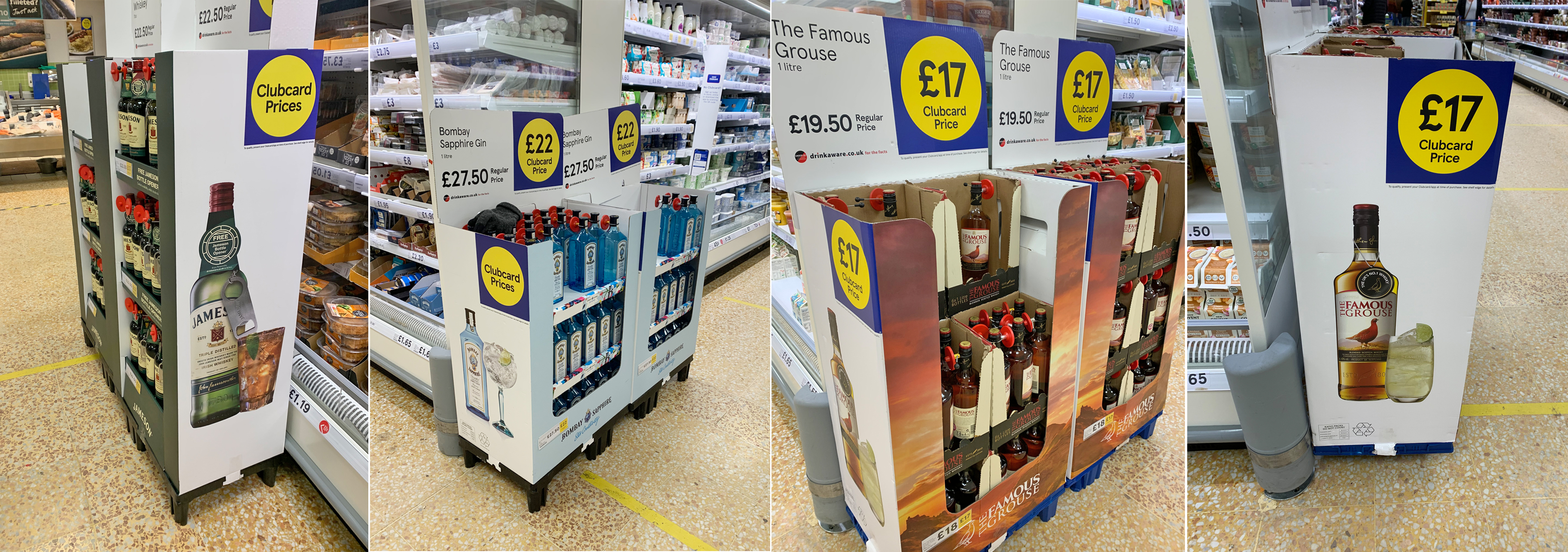 “The retailer will never say yes to that” is a line that frustrates many marketers, especially shopper marketers, both in brand owners and agencies alike. But are retailers the dark inflexible beasts they are sometimes made out to be? And what can shopper marketers and agencies do to improve their chances of getting retail support for shopper marketing activities?
“The retailer will never say yes to that” is a line that frustrates many marketers, especially shopper marketers, both in brand owners and agencies alike. But are retailers the dark inflexible beasts they are sometimes made out to be? And what can shopper marketers and agencies do to improve their chances of getting retail support for shopper marketing activities?
Retailers have a right to be inflexible
Firstly, let’s be clear. Retailers can often come across as being inflexible. But their stores are complex places, packed with a lot of people, both customers and staff. Thousands of products, thousands of feet of retail space: washrooms, escalators, crèches and canteens – a retail store is a complicated environment to manage, so let’s not blame a retailer for wanting to keep things simple. But let’s also be clear that retailers are willing to do brave things occasionally. Whenever I’m working with a group who are being harsh on retail flexibility I remind them of one simple concept: the in-store bakery. Imagine moving from a shelf with pre-packaged bread on it to setting up ovens, cooling, hiring bakers, bulk ingredient storage, shelf-life issues – that is hardly ‘keeping it simple’. But around the world, those apparently inflexible retailers were willing to tear up the rule book and do something differently. How did that happen, and what can brand owners and agencies learn from this to help them win with retailers?
Big flexibility requires a big prize
I wasn’t in the meeting, but I’m pretty sure big retail bosses didn’t agree to knock a hole in the wall of their stores and install a bakery because it might drive a couple of extra percent of sales. The prize must have been huge to overcome all of the barriers and opposition to an idea that radical. When assessing activity, shopper marketers must assess both the scale of the prize for the retailer (not just the brand) but also the scale of the implementation. The harder something is to implement, the bigger the prize needs to be.
Understand the obstacles and who makes the decisions
Too often marketing agencies don’t have an interface with the retailers (and many marketers too). And those that do often only talk to the buyer. Whilst the buyer may have the power to say yes to something, there are many other powerful people in a retailer who can say no – and the buyer is well aware of this. If campaigns keep getting knocked back, the shopper marketer must look to understand the reasons why, and the people who are saying no. The most successful brands I have worked with have managed to achieve significantly better implementation track records by engaging with multiple contact points within the retailer, well beyond the buyer’s office. Key people vary by retailer and activity, but if you’re not in close contact with store operations and marketing, then don’t be surprised if your success rate is lower than others.
Use the retailer’s language
Whilst it might seem obvious to position what you are selling using the retailer’s language, I see many examples which suggest that it isn’t. The retailer rarely cares how much of your brand they sell. They care about their sales, by store, or by category, or by both. Just as each of us has KPIs – the people at the retailer have them too. Work out what they are, and show how your activity will help them meet those KPIs. Simple, but effective.
Understand the retailer’s strategy
Yes – those retailers have a strategy. And whilst they don’t always stick to it, they will use it as a reason not to support you. Put it this way, if a buyer has to choose which initiative to propose to his boss, which one is he going to choose? The one which is in line with his boss’ strategy, right? If the campaign isn’t at least positioned to be seen as supportive of the retailer’s stated strategies, then don’t expect the retailer to fall over themselves to take it forward.
Understand how the retailer wants to collaborate
Different retailers work with different suppliers in different ways. Some like to collaborate all the way from ideas through to execution: others are happier being presented a final execution plan which they can say yes or no to. If your plans keep hitting a wall in a retailer, then perhaps you’re not collaborating in the way they want you to. Even if the end point is the same: playing ball the way the retailer wants to play can be key.
Be practical, be realistic
To the shopper marketer, or the agency lead, the activity you want to implement is important. It’s perhaps the culmination of months of work, and it’s might have a significant impact on your bonus, raise, or promotion. But, except in the rarest of circumstances, that simply isn’t the case for the retailer. It’s just another activity, from another supplier. They will simply not be as excited by it as you will be. Work hard to get them excited for sure. Work hard to make them care. But be realistic. They see ideas from brands and agencies every day. Most of them don’t work, or don’t pay back. Retailers stick to what they know for a reason. Don’t give up being brave, but be realistic too.
Whilst retailers can sometimes be inflexible, they do so for a reason. Understanding these reasons is critical to getting retailers to support shopper marketing activities. And retailers can be brave, too. But to get retail support for brave ideas requires a very different engagement approach.
Do you have any examples of getting retail support for a very different, or difficult in-store execution? How did it work out, and what was the secret to getting retailers to do difficult things? Please share in the comments below



